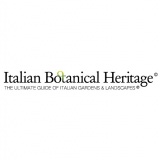
 Italian Botanical Heritage
Italian Botanical Heritage
Italian gardens: The park of the Guarene Castle
- WTI Magazine #121 Nov 17, 2019
-

 Italian Botanical Heritage
Italian Botanical Heritage
Immersed in the gentle landscape of the Langhe, the Castle of Guarene (Cuneo, in Piedmont) has existed since the Middle Ages, when it was a fortress. In 1700 it became the new summer residence of the Counts Roero: the current building was designed and built by Count Carlo Giacinto, between 1726 and 1772, who transformed it into an imposing three-storey building (it was completed by his sons Traiano and Teodoro), surrounded by elegant Italian gardens. Carlo Giacinto Roero was an enlightened aristocrat, amateur architect, friend of the Court architect Filippo Juvarra, to whom we owe the design of the facade.
The castle, now a museum-house as well as a luxury hotel, is open to the public. The most significant rooms are fifteen, distributed on both sides of the central Hall of Honour.
Created by Count Carlo Giacinto Roero di Guarene together with the gardener of the Castle of Govone from 1740, the garden is a splendid example of an Italian and French garden, with highly scenic features: the main garden extends to the south, in line with the castle. Built in 1748 with goat's hedges to delimit it, it was redesigned in 1757 with the addition of some cypresses, and then again at the beginning of the twentieth century. In the shape of an exedra, it is bordered by hornbeam backrests (Carpinus betulus) and divided into two compartments by boxwood hedges, flanked by eighteen large yews (Taxus baccata) moulded in the shape of superimposed discs. Other formal hedges of hornbeam, to the south, beyond the exedra, extend the perspective on the panorama of the valley. On a lower terrace, on the eastern side, there is another formal garden, called "Maneggio": triangular in shape, in the eighteenth century characterized by fruit trees, takes up the patterns of the French boqsuet dècouvert, from which emerge hornbeam plants grown in the form of spheres and rates pruned to overlapping discs. The hedges delimit flowerbeds of different geometric shapes, arranged symmetrically with respect to the central axis of the garden.
A recent renovation has restored the garden to its original splendour.